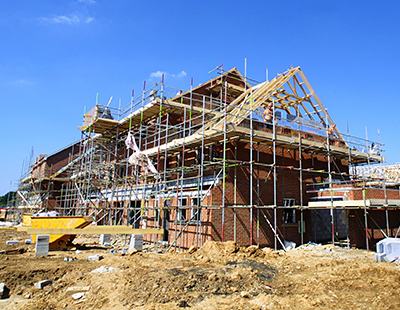
The mounting supply-demand imbalance in the market has contributed significantly to higher property prices and rents across many parts of the country, with the latest rental price data from the Office for National Statistics (ONS) revealing that rents in the private rented sector rose by 2.4% across the UK in the 12 months to July.
According to newly released figures from the Department for Communities and Local Government (DCLG), there were 34,920 homes completed in the April-to-June quarter, up 7% on the previous three months but down 2% on a year earlier. In the year to June, 139,030 homes were completed, up 6% year-on-year.
Mortgage lender LendInvest said that figures showed housebuilding was falling well short of the government’s target of building 200,000 new homes a year to help address England’s severe housing shortage.
“At the current rate [of modest housebuilding], we will fall well short of the government’s target of one million new homes by 2020, and fail to make inroads into the sharp housing shortage in the UK,” said Rod Lockhart, managing director at LendInvest, who believes that the onus is now on the government to “jumpstart” the housebuilding industry.
He continued: “The large housebuilders are not keen to do more, so efforts must be focused on small and medium-sized builders. The rumoured £5 billion Home Building Fund is a good start, but finance is not the only area holding these builders back. More has to be done to reduce the complexities of the planning system and open up access to land to build on.”
The coming Autumn Statement presents the government with the perfect opportunity to announce fresh measures to support housebuilders in their quest to build significantly more homes, according to Andy Hill, chief executive at Hill, which focuses on developing homes in London and the south east of England.
Hill commented: “The country is facing a major housing shortage, and it is more important than ever that the government supports both first-time buyers and housebuilders in the coming Autumn Statement, so that we can continue to build more new homes and get more people on to the housing ladder.”
Despite general disappointment about the number of new homes completed, the response to the volume of builds started in England was far more positive.
It is estimated that 36,400 new homes were started in Q2, a 2% increase on the quarter and a 6% rise on the year, according to the figures from the DCLG.
“The data shows that despite all the claims in the run-up to the referendum campaign, the construction of new homes remained steady in Q2, with housebuilding starts up 2% on Q1 and up 6% on the same time last year,” said Paul Smith, CEO of haart estate agents.
“It seems housebuilders were busy ploughing ahead with new sites despite the referendum noise, because the demand for new homes remained high,” he added.

No comments:
Post a Comment